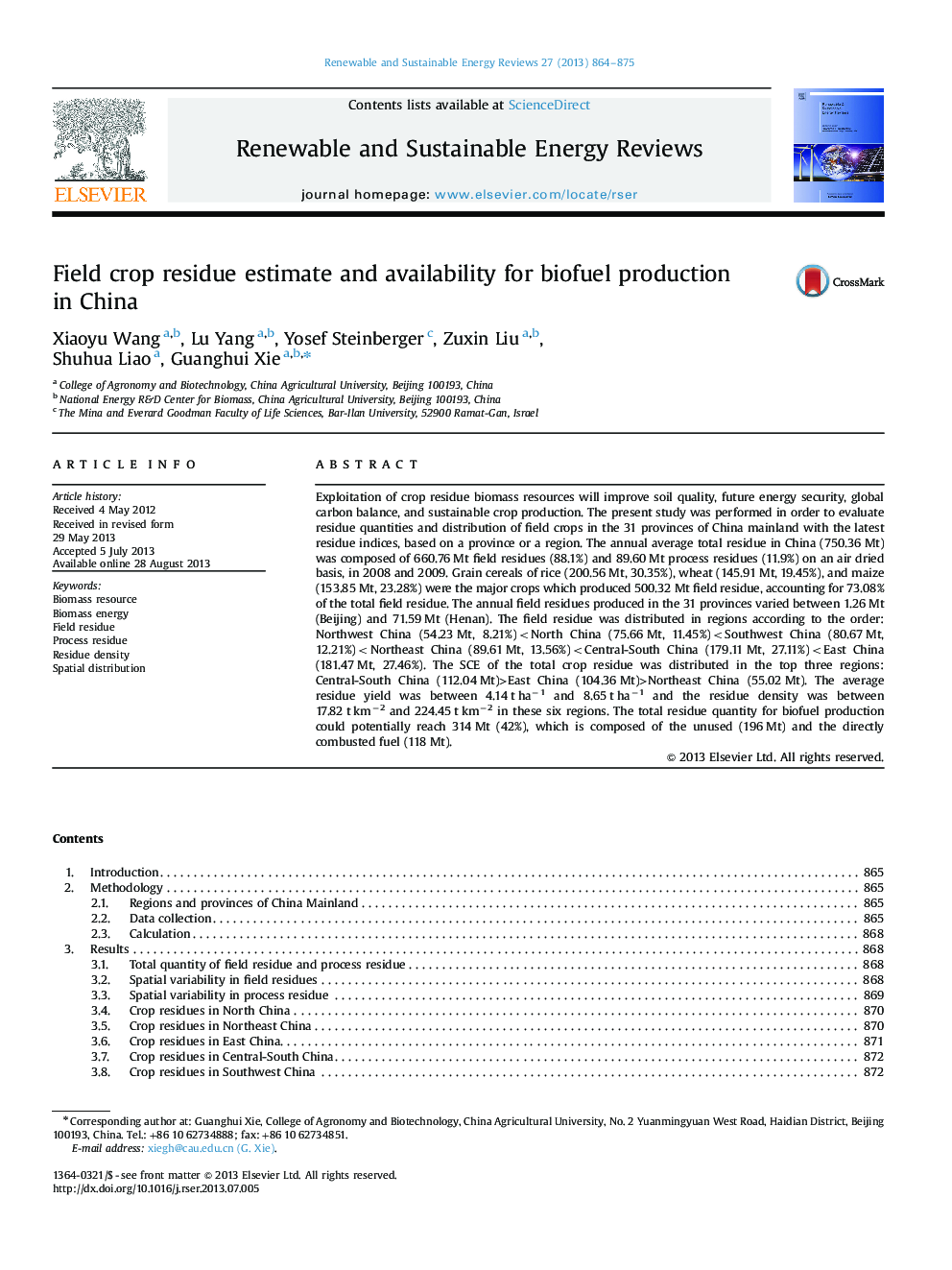| Article ID | Journal | Published Year | Pages | File Type |
|---|---|---|---|---|
| 8121759 | Renewable and Sustainable Energy Reviews | 2013 | 12 Pages |
Abstract
Exploitation of crop residue biomass resources will improve soil quality, future energy security, global carbon balance, and sustainable crop production. The present study was performed in order to evaluate residue quantities and distribution of field crops in the 31 provinces of China mainland with the latest residue indices, based on a province or a region. The annual average total residue in China (750.36 Mt) was composed of 660.76 Mt field residues (88.1%) and 89.60 Mt process residues (11.9%) on an air dried basis, in 2008 and 2009. Grain cereals of rice (200.56 Mt, 30.35%), wheat (145.91 Mt, 19.45%), and maize (153.85 Mt, 23.28%) were the major crops which produced 500.32 Mt field residue, accounting for 73.08% of the total field residue. The annual field residues produced in the 31 provinces varied between 1.26 Mt (Beijing) and 71.59 Mt (Henan). The field residue was distributed in regions according to the order: Northwest China (54.23 Mt, 8.21%)East China (104.36 Mt)>Northeast China (55.02 Mt). The average residue yield was between 4.14 t haâ1 and 8.65 t haâ1 and the residue density was between 17.82 t kmâ2 and 224.45 t kmâ2 in these six regions. The total residue quantity for biofuel production could potentially reach 314 Mt (42%), which is composed of the unused (196 Mt) and the directly combusted fuel (118 Mt).
Related Topics
Physical Sciences and Engineering
Energy
Renewable Energy, Sustainability and the Environment
Authors
Xiaoyu Wang, Lu Yang, Yosef Steinberger, Zuxin Liu, Shuhua Liao, Guanghui Xie,
